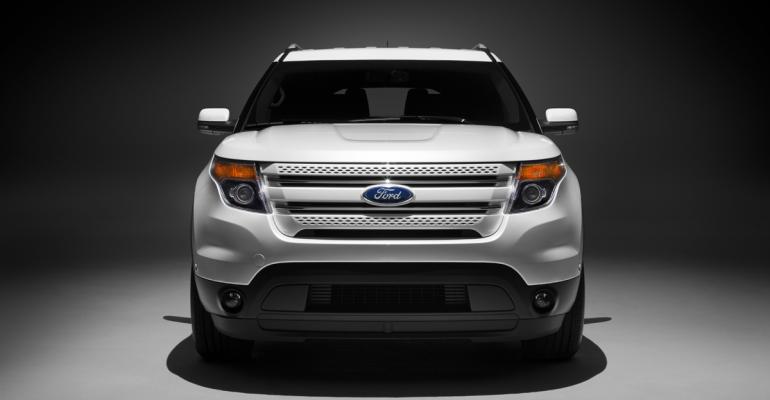Expect Ford’s next-generation F-Series fullsize pickup to feature aluminum body panels as the auto maker races to comply with increasingly stringent fuel-economy standards.
The next-generation version of America’s best-selling vehicle, dubbed P552 and due in 2014, will feature extensive use of weight-saving aluminum, including doors and fenders, according to two independent sources.
The move will mark a breakthrough in the fullsize pickup market where steel long has been the gold standard. But the change will not be cause for apprehension, according to one dealer who serves consumers in the heart of truck country.
Alternate material use “hasn’t stopped anybody from buying Corvettes,” says Glenn Germany, a sales rep at Planet Ford in Spring, TX.
Chevrolet’s iconic 2-seat sports car long has featured glass-fiber body panels.
On the other hand, improved fuel economy “would be a plus,” Germany adds.
Ford is vague whenWardsAuto seeks official confirmation of plans to revamp the best-selling vehicle in the U.S. for 29 years running.
“We know our customers, and it’s all about the truck being a tool and they want it to be more productive and more efficient,” says Doug Scott, Ford’s truck marketing manager. “So we have to keep moving the needle if we want to be king of hill. We’re always looking at all the ways of doing that going forward and we have a great strategy.”
However, migrating to aluminum for use in large body panels is consistent with pronouncements by Ford product guru Derrick Kuzak, who has said the auto maker intends to shed up to 700 lbs. (318 kg) per model before 2019.
F-Series hoods have been crafted from aluminum, but not production-model body panels. The new-for-’11 Ford Explorer also features an aluminum hood.
The rollout coincides with the final increments in the current U.S. Corporate Average Fuel-Economy standards. Factoring for performance credits available from the Environmental Protection Agency, the mandate for 2014 calls for vehicle fleets to achieve 31.3 mpg (7.5 L/100 km), followed by 32.6 mpg (7.2 L/100 km) and 34.1 mpg (6.9 L/100 km) in 2015 and 2016, respectively.
Weight reduction is a key enabler to meet the stricter fuel-economy regulations. Auto makers worldwide “are knocking on doors, looking to figure out ways to light-weight vehicles in a safe, efficient and effective way,” says Kevin Lowery, spokesman for leading aluminum supplier Alcoa.
Against this backdrop, Ford trails cross-town General Motors in the fullsize pickup fuel-economy sweepstakes. GM’s hybrid lineup leads the segment with a combined city/highway rating of 21 mpg (11.2 L/100 km), according to the 2012 EPA Fuel Economy Guide.
Ford’s best performing ’12 entry, the 2-wheel-drive F-150 equipped with a 3.7L V-6, is rated at 19 mpg (12.4 L/100 km).
Durability, cost and quality concerns that dogged aluminum a generation ago have been sorted out, Lowery says.
“Look at what is used in the defense industry,” he tells WardsAuto, noting aluminum-intensive military vehicles survive battlefield conditions.
Cost-savings are derived from the weight-savings. “When vehicles weigh less you may need a smaller engine, or the brakes you need are going to be different, and that goes throughout the entire vehicle,” he says.
And advanced press technology has resolved the formability problems that first greeted auto makers who made the same demands of aluminum that were made of steel.
Auto makers “don’t see that as an issue,” Lowery says, adding increased use of aluminum by Ford merely is consistent with industry trends.
Aluminum use is expected to double by 2025, he adds.
– with James M. Amend





